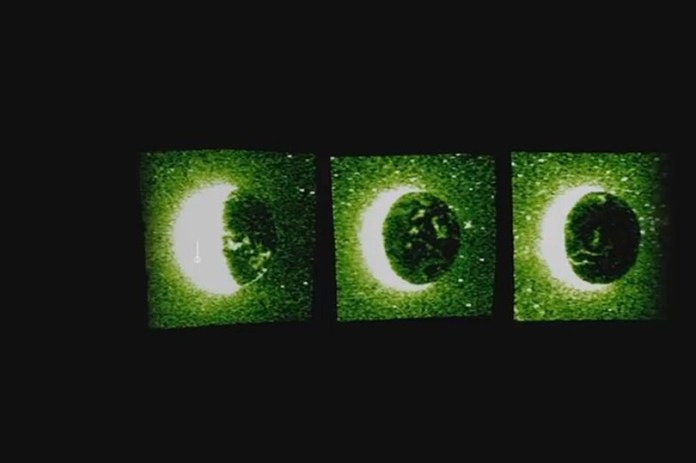The United Arab Emirates’ Hope spacecraft, which has been orbiting around Mars since February this year, has sent back fascinating images of the glowing atmospheric lights of the Red Planet’s night sky. The captured images snagged observations of tricky discrete auroras.
The UAE Space Agency has stated that the data gathered by the orbiter include far and extreme ultraviolet auroral emissions which are first-of-its-kind images obtained from Mars.
“The beacons of light that stand out against the dark nightside disk are highly structured discrete auroras, which trace out where energetic particles excite the atmosphere after being funneled down by a patchy network of crustal magnetic fields that originate from minerals on the surface of Mars,” announced the space agency.
HOPE; the spacecraft which entered into the orbit of the Red planet, created history for the UAE, as it became the first Arab nation to have a scientific presence at Earth’s near neighbor.
The mystery & beauty of Aurora: Science Behind
Did you know that the North or South Pole of your planet Earth frequently have beautiful light shows in the sky? These are not artificial or man-made, but rather, they are the charged particles that are ejected by the Sun, also known as solar winds which enter the Earth’s atmosphere.
Although the glowing atmosphere comes to life at night, it is fascinating that the Sun contributes to the whole show by emitting energy and small particles to the atmospheric layers. But the Sun doesn’t send the same amount of energy all the time.
Our planet is protected against these harmful particles because of the geomagnetic field, which preserves life by shielding us from the solar wind. However, there is a constant streaming solar wind and solar storms, whose energy and small particles travel down the magnetic field lines at the north and south poles and interact with different gases in the atmosphere resulting in beautiful displays of light in the sky. The green and red lights are caused by Oxygen, while Nitrogen glows in the color blue and purple.
Aurora on Mars unravels Hope
Unlike auroras on Earth, the scattered discrete auroras on Mars are observed all around the planet at night time. Scientists are well-versed with the fact that the Earth’s auroras are tied to the planet’s magnetic field, but the situation differs when it comes to Mars. Scientists have observed three types of auroras on the Red planet to date.
They are named Martian auroras. One type of discrete Martian auroras occurs extensively on the daylit side of the planet, while the other two occurs on the night side of the atmosphere. The images of the auroras captured with Hope aren’t limited to periods of heavy solar activity and rather occurring only in patches of the nightside of Mars.
The European Space Agency’s Mars Express spacecraft and NASA’s MAVEN orbiter have both observed the discrete aurora, but compared to Hope, those missions have orbited closer to the surface of Mars and seen less of the planet. These images from the Hope spacecraft will help the scientists in understanding how Mars lost the thicker atmosphere it had billions of years ago. The thick atmosphere of the Red planet is among the essential requirements for sustaining life.
Mars Mission: What is Hope orbiter studying?
In February, the Hope probe took off from earth and arrived at Mars, becoming the first mission from the Arab world. Mission scientists’ primary objective is to study the Martian weather dynamics by probing into how weather changes and how much hydrogen and oxygen are escaping into space. Scientists are keen to decode how much hydrogen and oxygen is spilling into outer space so that they can understand why Mars lost so much of its early atmosphere and liquid water.


Comment here